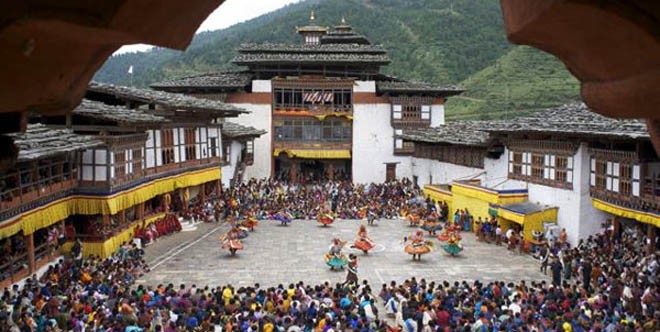

Living the life of a nomad is a dream many people want to live -- hopping from one destination to another, spending nights in cheap motels with broken beds or just camping under the starry sky. Then there are those who want to travel in style, spend their afternoons lounging in the spa of a five-star hotel and the nights cuddling with soft pillows and silk bed sheets.
Whatever your taste or travel dream may be, the one consistent thing that remains is an exotic location: bright blue sea, white sand beach, lush green forest where you might encounter animals you otherwise only see on National Geographic.
One thing that makes this dream a tad difficult to achieve is that travelling is an expensive business. You’re perhaps better off sitting at home.
Logic takes over as you begin to calculate cost and realise that when you convert the Pakistani rupee into any other currency, whatever you’ve saved over the past year looks like a meager amount. Your dreams of backpacking across Europe on the most basic resources come to a depressing end. Not only the cost of staying but the entire process of obtaining a visa is as arduous.
Yet again you come to the conclusion that you’re better off at home.
Looking closer to home, newspaper advertisements are filled with travel agencies taking group trips at discounted rates to Malaysia, Thailand and Singapore. The closest they take us to Europe is Turkey. Occasionally, schools or colleges provide that rare opportunity to travel to Europe at greatly discounted prices.
The question is: why do we ignore more lucrative options in our own backyard, flying to countries which ask for a hefty visa fee and eventually turn out to be more expensive due to the difference in currency?
Backyard here most definitely does not refer to travelling up North in Pakistan, no matter how beautiful those areas may be. Travelling within South Asia, to the South Asian Association for Regional Cooperation (Saarc) countries of Maldives, Nepal, Sri Lanka, Bhutan, Afghanistan, Bangladesh and India, is an option only a few people seem to take.
India has become a popular option for people looking to experience the nightlife and dabble in a culture different from the orthodoxy taking hold of our country. But, surely, the tedious process of acquiring a visa is a deterrent.
Afghanistan seems to present us with the same apprehensions that a foreigner would feel while travelling to Pakistan.
Bhutan, while a major international tourist destination, controls the amount of tourists entering the country. Visa is issued on arrival to people who have already booked a tour that costs at least $250 per day. While tourists arriving from other South Asian countries such as Maldives, Bangladesh and India don’t require a visa, Pakistan is not on the list.
Maldives, Nepal and Sri Lanka are three South Asian countries that have relaxed visa policies -- yes, even for Pakistanis. Maldives issues a free on-entry visa for 30 days, while Nepal issues one on the first entry of the year. Sri Lanka, recently introduced Estimated Time of Arrival (ETA) form that also requires the payment of reduced fees of $15 for Saarc countries.
Apart from the relatively easy visa policies, travelling to the Saarc countries is a more affordable option than, say, going to Malaysia, Thailand or Singapore. The purchasing power of Pak rupee is respectable -- Pakistani 100 rupees roughly convert to 3 Malaysian ringgit, 14 Maldivian rufiyaa, 124 Sri Lankan rupees and 94 Nepalese rupees.
The one setback in travelling to these destinations is the high airfares. Since these are routes not travelled on frequently by Pakistani tourists, direct flights by local airlines are not available. However, Nepal is an exception to this, since PIA flies to Kathmandu and the ticket from Lahore costs approximately Rs.30,000. Emirates and Sri Lankan airlines provide flights to both Maldives (Male) and Sri Lanka (Colombo) with stop-overs in Doha or Dubai. These tickets cost as much as it would to fly to Turkey or Malaysia or Thailand.
What makes destinations like Malaysia and Thailand a more viable option is the receptiveness of travel agencies -- they provide special packages with discounted flight rates to customers. They also make hotel bookings easier to find, guaranteeing that when you arrive at the hotel you will get the quality and standard you paid for.
This is one hurdle that needs to be crossed if tourism within the Saarc countries is to be improved.
The prices of hotels and airfares at the moment cost as much as they would in any other country, but since the currency of these countries is not that expensive in terms of the Pakistani rupee, cheaper options will be available. Such infrastructure will only become popular and known once people start travelling to these destinations more frequently. A simple internet search also reveals cheaper options in Sri Lanka and Nepal.
Tourism has been on the agenda of Saarc since 1991, when a Technical Committee for tourism was formed. Despite the formation of the Working Group for Tourism in 2004, very little has been achieved in terms of promoting tourism in South Asia. Initially, the idea was to build up South Asia as a collective international destination. The focus more recently has shifted to inter regional tourism. However, little has been done on promoting tourists within the region.
Some steps are positive, such as reduced entry tickets at historical monuments for people belonging to the Saarc countries. The private sector has not jumped on the opportunity and Saarc has also lagged behind in promoting travel due to political differences within the countries. Nepal, Sri Lanka and Maldives, are not involved in any political conflict with Pakistan, thus attaining a visa is easy.
Pakistani tourists should take advantage of these relaxations while they last for us. Since these countries are also tourist destinations, travel information is easily available on their websites.